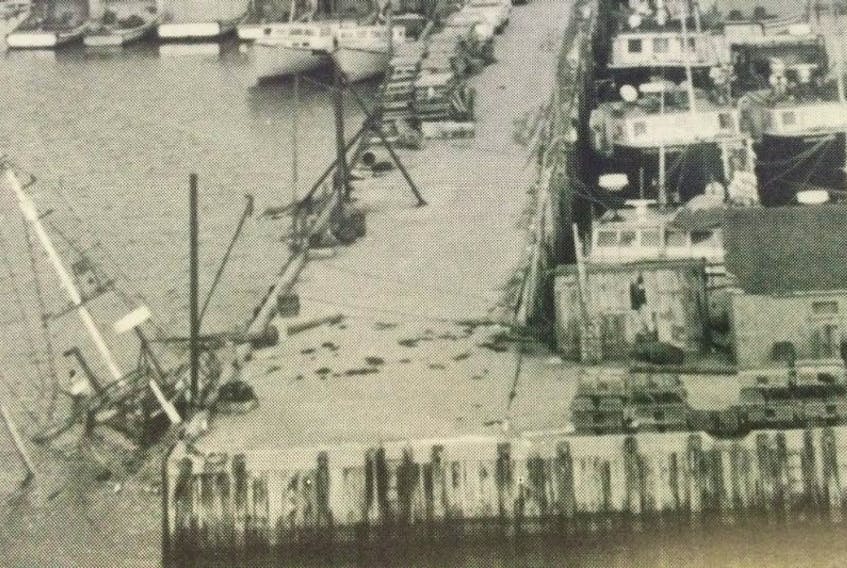“It was a warm day,” recalls the current mayor of Clark’s Harbour, Leigh Stoddart. “I was working and the wind it kept picking up, and picking up and picking up.”
Fishermen went running to get their boats secure as the waves picked up to 20 feet and the wind blew to 90 knots.
“It was wild,” he said. “Anything not secured down was flying everywhere.”
In Shelburne, when the gale was at it’s height, three deep-sea fishing vessels fought their way through the waves and into Shelburne Harbour, thankful to make it to shore. It was reported that many experienced fishermen called the storm the worst they had ever seen.
“Any man that isn’t frightened in a gale like that hasn’t got a working imagination,” one fisherman had said.
The storm saw boats tossed by the wild seas and the gale force winds. A 200-foot barge broke loose from a wharf and in Clark’s Harbour a 65-foot longliner, the Heidi Marlene, sunk at the wharf.
Wilson’s Furniture store in Barrington Passage couldn’t stock enough candles on their shelves during the four-day power outage that had plunged the county in darkness. In the store itself, employees were dressed in hats, coats and scarves as they waited on customers in the cold.
Neighbours taking care of neighbours
The storm had brought out the best in people, as they reached out to neighbours to make sure they were okay during the power loss. Some opened their homes to others.
People with the means to cook meals provided to those who had none.
“It does not seem likely that a more urban area with less independent or resourceful people could have managed such an emergency with equal good humour and efficiency,” reported the Coast Guard newspaper.
Lockeport was another area that saw a lot of damage. A new building at Peirce Fisheries was blown into the harbor, a section of the roof of the high school was ripped off and windows at the Irving station were smashed by the force of the wind.
Bertram Bower had left her home with her family shortly after the power went out. With only a hot air furnace, she sought shelter with friends. It was while she was gone that her family received the devastating news that their home had been destroyed by fire.
“Not many of us are going to soon forget the first week in February, 1976,” wrote the Coastguard. “Some of us have more reasons than others to remember.”









